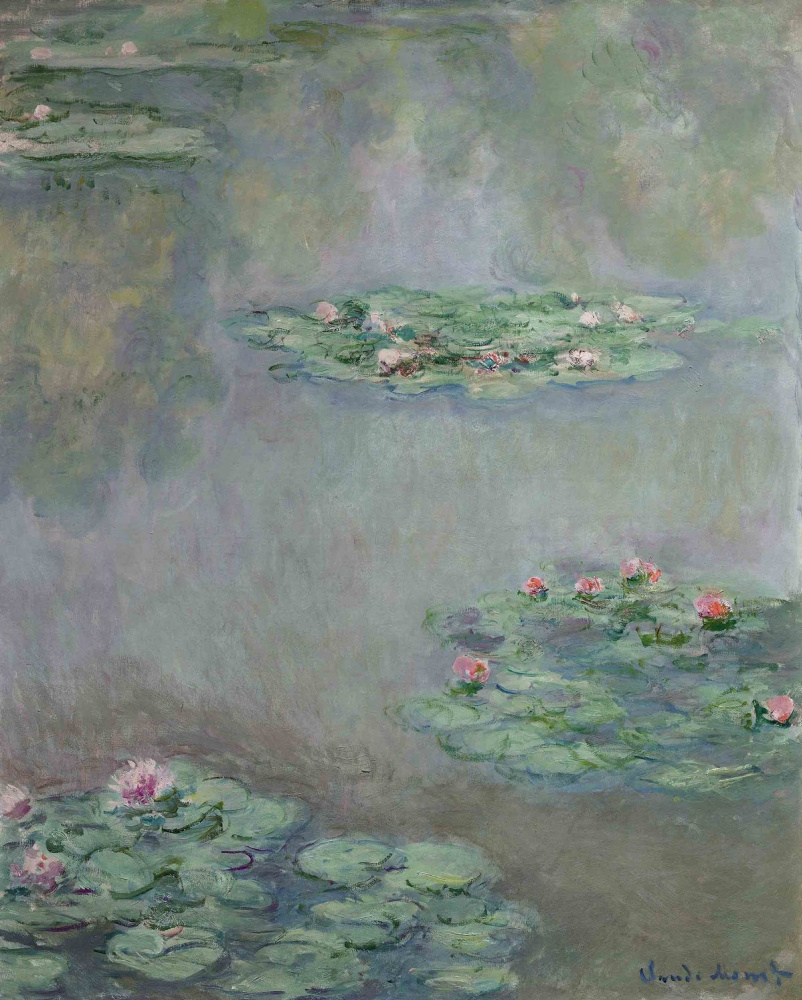log in
Enter site
Login to use Arthive functionality to the maximum
Water Lilies
Claude Monet • Painting, 1908, 100×81.3 cm
Description of the artwork «Water Lilies»
The Nymphéas or Water Lilies by Claude Monet was first acquired from the author in December 1920 by Durand-Ruel & Bernheim-Jeune, Paris. In three years, it was bought by Henri Canonne, a pharmaceutics businessman who invested his fortune into Impressionists paintings, including 40 artworks by Claude Monet. And it safely preserved in the collection of the Canonnes till 1995 when sold at Christie's to a private collection in Switzerland and then, in five years, to the United States. Last time it was sold at Sotheby's in 2015 for $33,850,000.
In 1907, Monet changed the format of his water landscapes from horizontal to vertical. In transforming the format, he searched for a new method of rendering a perspective. Banks, trees, the sky and the skyline composed the picture but as a reflection on water. A scale and division into plans, a foreground and a background, have already stopped rendering depth in Monet's paintings. The vertical canvas offered him new opportunities to make the space endless and to create the world full of probabilities and discoveries.
When creating a fictional painter called Elstir in his novel In Search of Lost Time, Marcel Proust took much from Monet. Proust described the paintings of Elstir in such a way, "But I was able to discern from these that the charm of each of them lay in a sort of metamorphosis of the things represented in it, analogous to what in poetry we call metaphor, and that, if God the Father had created things by naming them, it was by taking away their names or giving them other names that Elstir created them anew."
In 1907, Monet changed the format of his water landscapes from horizontal to vertical. In transforming the format, he searched for a new method of rendering a perspective. Banks, trees, the sky and the skyline composed the picture but as a reflection on water. A scale and division into plans, a foreground and a background, have already stopped rendering depth in Monet's paintings. The vertical canvas offered him new opportunities to make the space endless and to create the world full of probabilities and discoveries.
When creating a fictional painter called Elstir in his novel In Search of Lost Time, Marcel Proust took much from Monet. Proust described the paintings of Elstir in such a way, "But I was able to discern from these that the charm of each of them lay in a sort of metamorphosis of the things represented in it, analogous to what in poetry we call metaphor, and that, if God the Father had created things by naming them, it was by taking away their names or giving them other names that Elstir created them anew."


